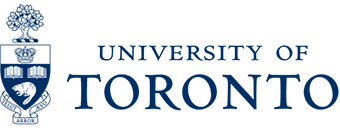Dr. John A Persing, MD, FACS
Professor and Chief, Section of Plastic Surgery
Yale University of Medicine
Biography
Dr. Persing is Professor of Plastic Surgery and Neurosurgery at Yale University School of Medicine and Chief of Plastic Surgery at Yale University School of Medicine and Yale-New Haven Hospital. He received his medical degree at the University of Vermont and his residency training in Neurosurgery and in Plastic Surgery at the University of Virginia. His major clinical interests are related to craniofacial surgery and the treatment of problem vascular anomalies. He is the author or co author of more than 200 publications on these and other topics. His research has focused largely on the basic mechanisms in the development of cranial deformities in craniosynostosis and their subsequent treatments.
He has served as President of the American Society of Maxillofacial Surgeons, President of the American Association of Pediatric Plastic Surgeons, Chair of the Section of Plastic Surgery of the American Academy of Pediatrics, Chair of the Section of Plastic Surgery of the New York Academy of Medicine. He has been President of the American Association of Academic Chairmen of Plastic Surgery, and Chair of the American Board of Plastic Surgery. He served on the Board of Directors of the American Society of Plastic Surgeons and the North American Skull Base Surgery Society, and was a trustee of the International Craniofacial Surgery Society, and the American Association of Plastic Surgeons.
He is currently co-editor of The Journal of Craniofacial Surgery and has served on the editorial boards of The Journal of Plastic & Reconstructive Surgery, as Associate Editor, The Annals of Plastic Surgery, Cleft Palate Craniofacial Journal, amongst others.
Abstract: Craniosynostosis
The skull deformities associated with craniosynostosis are multi-varied. The individual treatments must reflect this multi-varied character. Comprehensive management of craniosynostosis disorders requires an understanding of not only the restrictive deformities of the skull, but also the compensatory abnormalities. By using this approach, a more complete and longer lasting correction of cranial deformities is seen and the potential for recurrence of deformity requiring reoperation is diminished. The author will describe the pathologies as well as the treatments of individual forms of craniosynostosis and the rationale for the selection of these approaches.
Abstract: Vascular Anomalies
The treatment of hemangiomas and arterial venous malformations in the head and neck region are challenging treatment problems. Despite medical advances, there are a number of patients with hemangioma deformities, particularly in early childhood who are optimally treated by surgical intervention, rather than delaying treatment until involutional stages have occurred. The techniques used and results of this survey will be described. Arteriovenous malformations require a different set of principles and management. Specifically, because AVM’s do not involute, they pose a high risk for continued growth and hemorrhage. Frequently, a more interventional approach is required. The steps for safe and comprehensive management to include preoperative embolization will be outlined.

